#PIC16F1xxx Arduino based programmer by @jaromir.sukuba
I wanted to look into programming PICs for a while and I felt like the PICkit 3 would be the way to go but it's somewhat expensive and I couldn't quite get myself to buy one of those clones so when I first saw [jaromir]'s project I knew I had to give it a try. Sort of my version of #Operation: Learn the PIC.
As [jaromir] describes, the programmer has its limitations but for someone just wanting to get to grips with the basic process it sounded pretty good and so it was. All you need to get started is any Arduino with an ATmega328 so I pulled out a Pro Mini and CP2102 and hooked up the basic circuit:
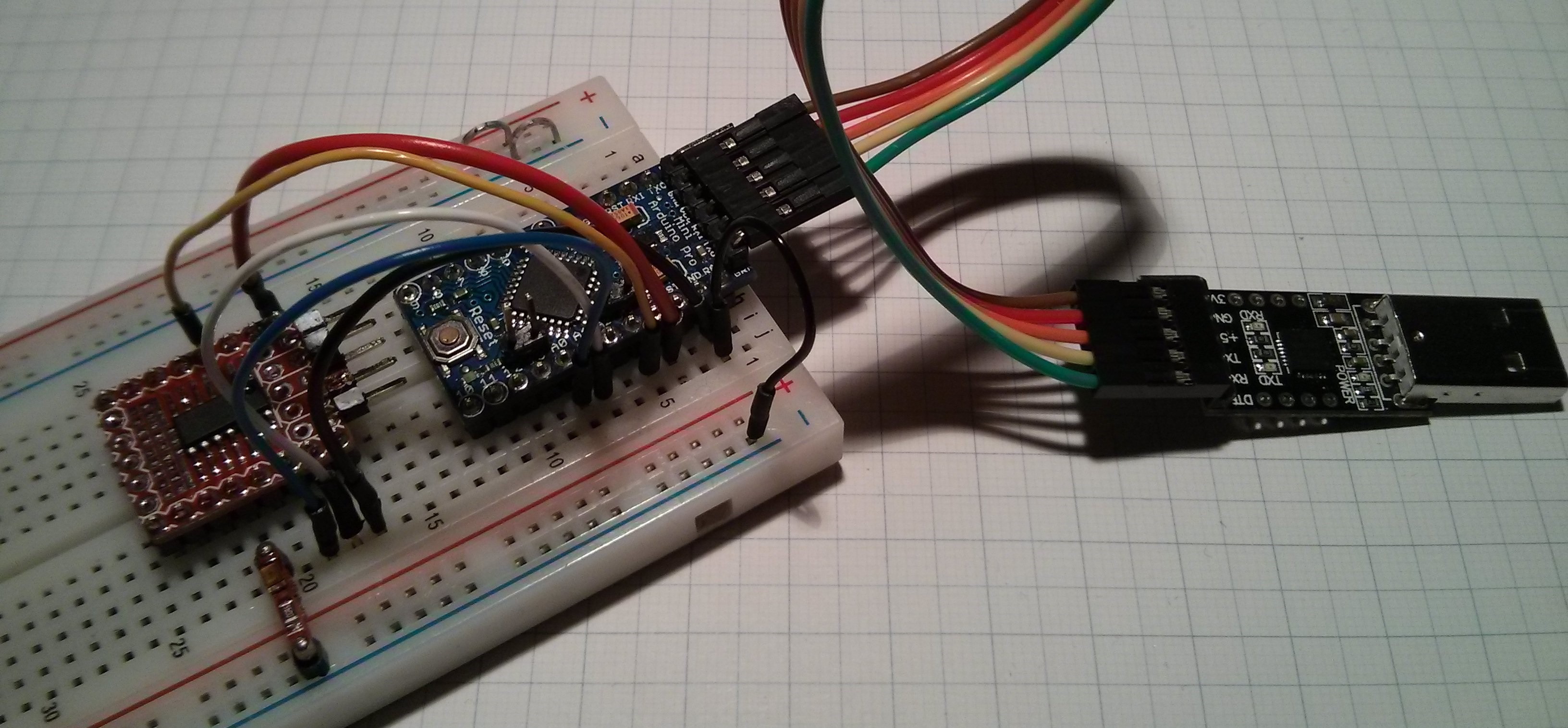
I had previously PICked up [get it? ...sorry ;) ] two compatible PICs from the 16F1xxx series that were not yet tested with [jaromir]'s programmer such that I could contribute a bit of information to the project. Namely I got a 16F1454 in a DIL package and a 16F1503 in a SOIC package. To use the latter one I soldered it to one of my breakout boards and added the typical ICSP header:
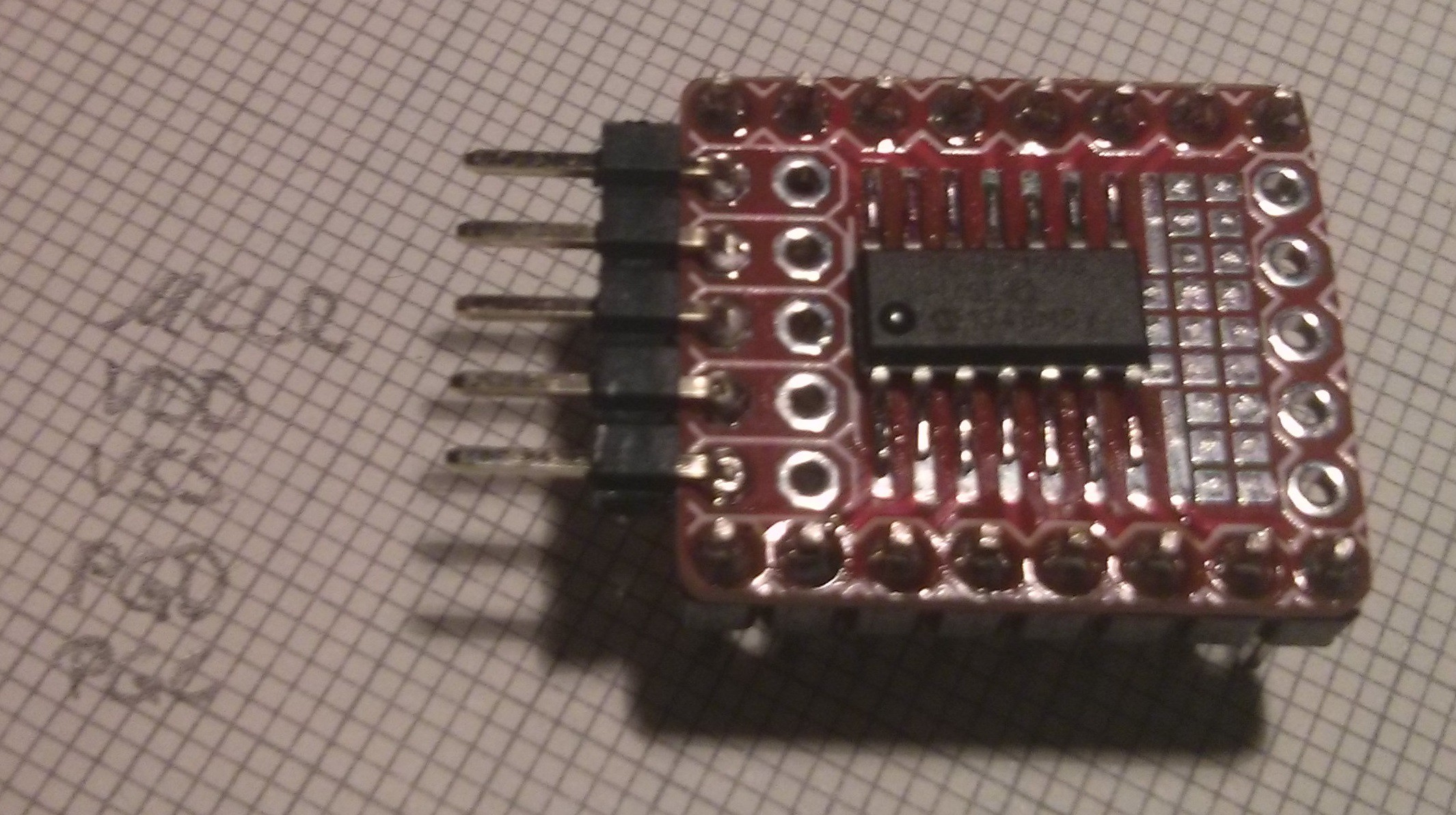
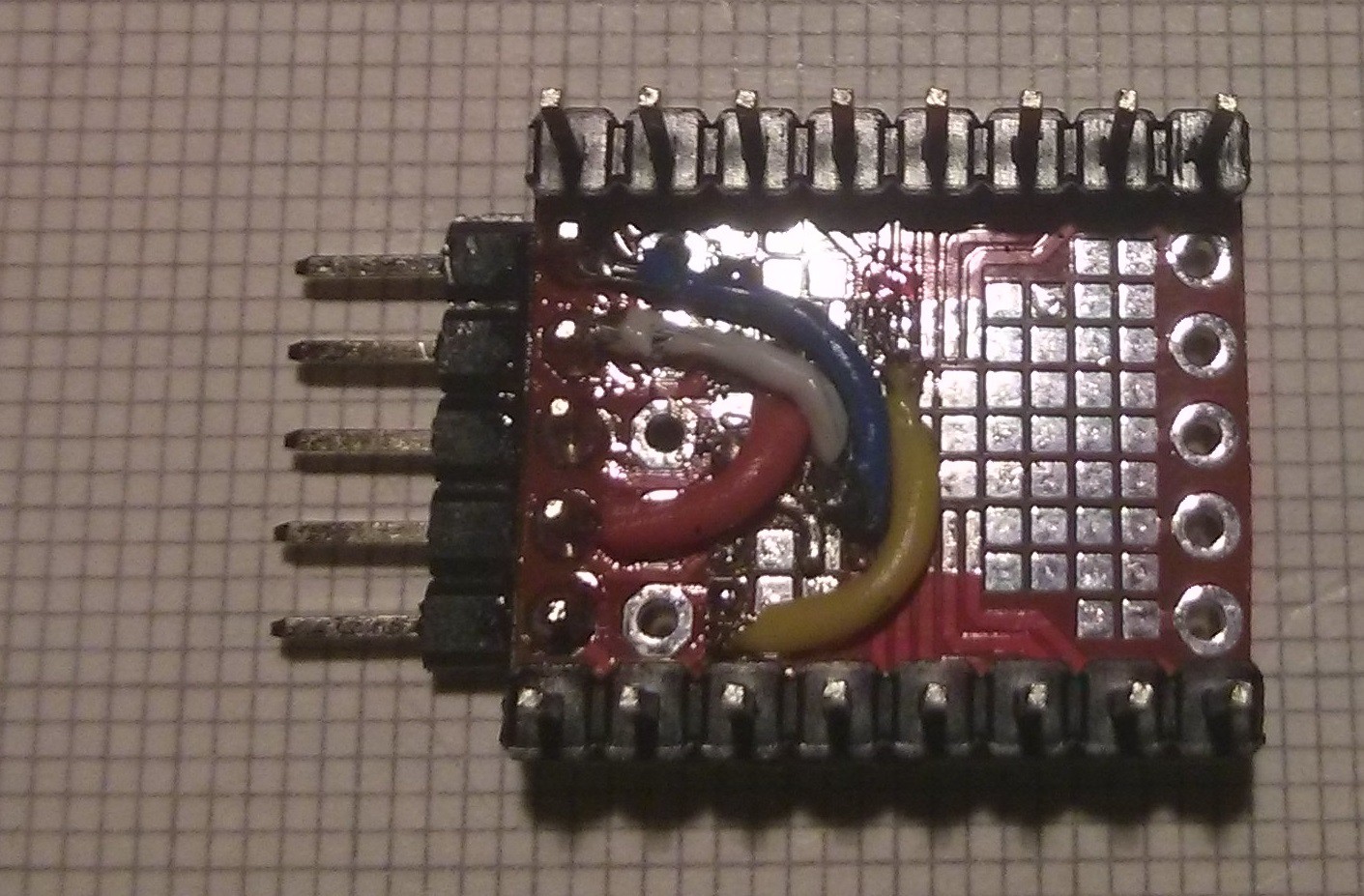
I later also added a pull-up on !MCLR and a decoupling capacitor and might also add some LEDs to this board.
To get started on the software side I simply followed [jaromir]'s how to which has all the necessary information to set up the programmer and I couldn't have wished for better instructions.
Even both chips were not supported at the time I wanted to see what the programmers response would be so I ran
pp2.exe -c COM3 -p -n -t 16f1454 file.binto check the device signature to which I received an error message stating that this CPU type wasn't supported which makes complete sense. So I went back to the how to which also includes instructions on how to modify and build the software side of the programmer. From looking at the source file it was pretty obvious where the necessary device compatibility had to be added and which information was required so I took to the datasheets to find the required information. Flash size, device ID and device ID mask were easy to find with the search function but I couldn't figure out what the right page size should be. After searching up and down through the 'Memory Organization' chapter, where I figured this information had to be, I asked [jaromir] for help to which he posted yet another set of very detailed and helpful instructions. Those pointed me to the right chapter in the datasheet and I continued adding my PICs to the source file and compiling a new executable.
I cannot stress enough how great [jaromir]'s instructions are. I admit that this problem was mainly due to my own laziness but if I had one suggestion it would be more detailed comments in the source files. It's kind of a moot point now with these detailed instructions but I think it's good practice.
Anyway, now that the programmer supports the two new PICs the above command stopped complaining about the CPU but instead about the input file (which was non-existent) and so began my struggle to understand MPLABX. This probably took longer than setting up the programmer so it seems strange that I'm keeping this part quite short but I was surprised that I just couldn't find a good beginners tutorial... by which I mean a tutorial for very lazy people like me. If you can recommend a good tutorial I'd be very grateful. Suffice it to say that I eventually got both PICs to blink and at the end of the day that's what counts, right? Right. (probably not. whatever. it's late). Have some gifs:


If someone just wants to test their PIC16F1454 or -1503 or just the programmer without having to go through the whole MPLABX situation, I have uploaded my .c, .hex and .bin files to this project.
When flashing a chip I like to use the -v parameter with a value of 2
pp2 -c COM3 -v 2 -t 16f1454 file.binwhich prints some dots (1 per flash page) that give a nice sense of progress
Opening serial port Device ID 0x2CE2 Programming FLASH (4096 B in 128 pages)................................................................................................................................ Programming config Verifying FLASH (4096 B in 128 pages)................................................................................................................................ Verifying config config 1 OK: 39E4 config 2 OK: 3FFF Releasing MCLRI might try to implement a progress bar as a little exercise for myself but this is probably a bit down the line. Another thing I think would be cool/useful is to port the firmware to other AVRs, namely the ATmega32U4 such that one could use the Pro Micro as a one stop solution or maybe to the ATtinyx4 (together with a CH340G) just because a '328 seems a bit overkill.
As I mentioned above, my version of [jaromir]'s programmer is just hooked up on a breadboard right now so I'll probably make an adapter for the Pro Mini to get the 5-pin ICSP header.
Update 2016-01-25:
I got around to making that adapter for the Pro Mini:
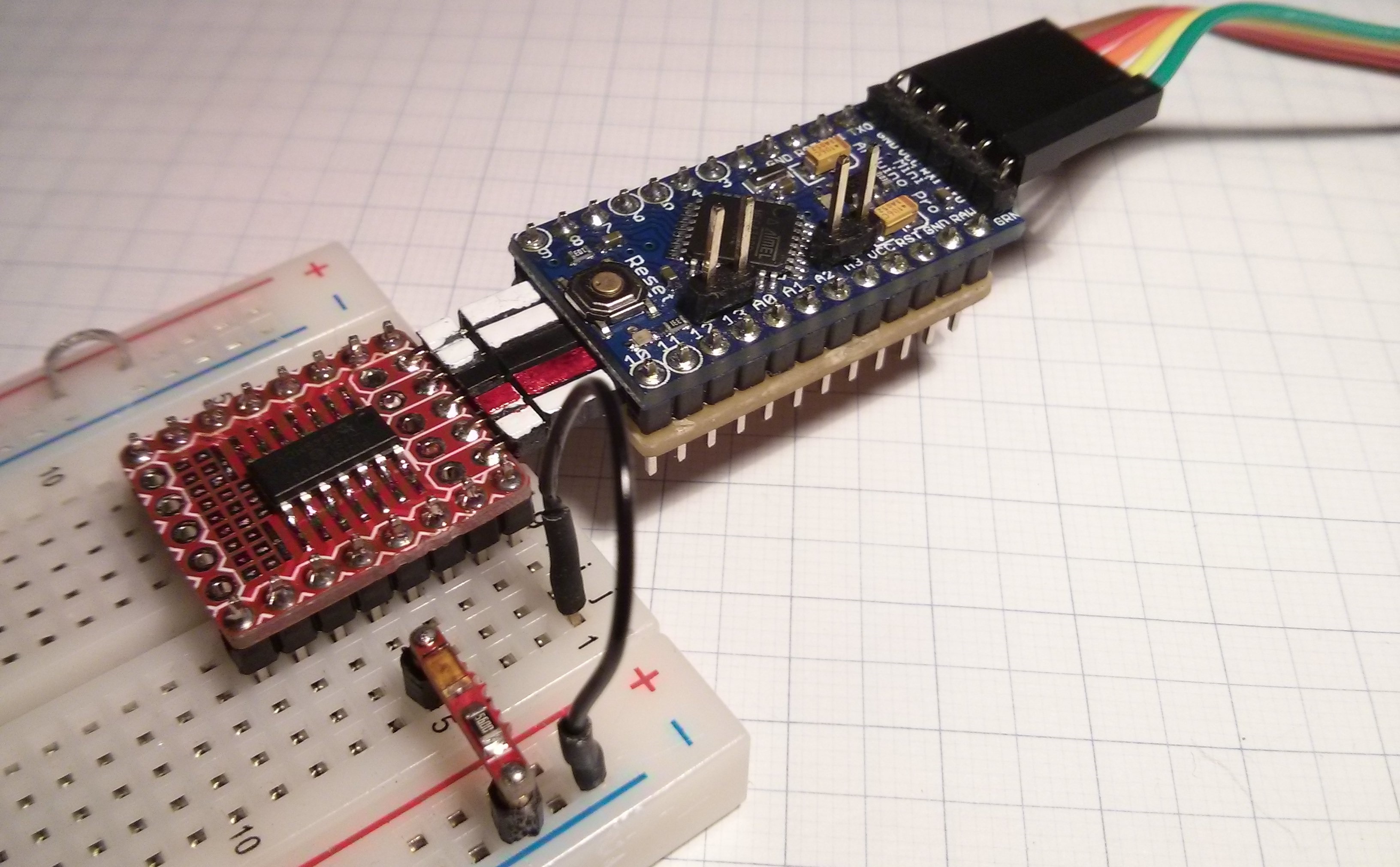
At first I thought I'd just use female headers to connect to the Pro Mini but I really liked the slim form factor of stacking the two boards. However, I wanted to maintain the flexibility of using female headers so I used some of the inserts/clamps from those headers directly soldered to the stripboard:
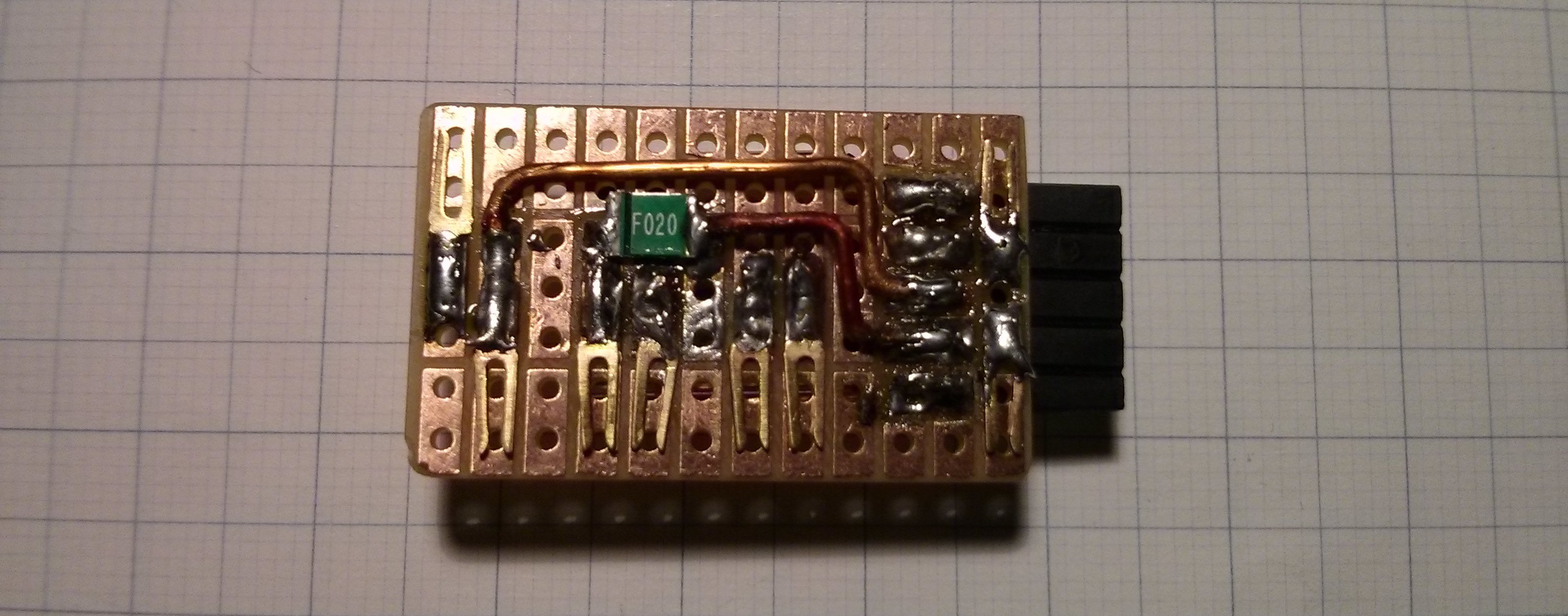
I used two on the GND and Vcc connections and a few extra ones on other (not used) pins for stability; the MCLR, PGD and PGC connections are on the other side. Of course I tested it and it works quite well.
 Stefan Lochbrunner
Stefan Lochbrunner
Discussions
Become a Hackaday.io Member
Create an account to leave a comment. Already have an account? Log In.